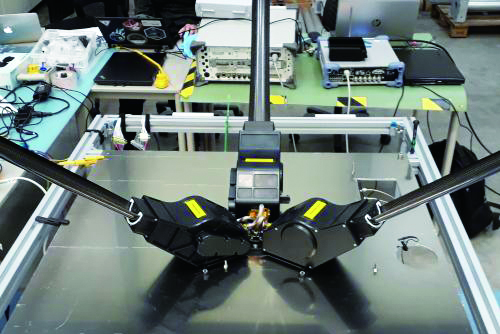On May 21, 2018, China successfully launched a relay satellite from the Xichang Satellite Launch Center to an orbit beyond the moon, setting the stage for the first soft-landing on the lunar far side while opening up a new chapter in space-based radio astronomy.
Resolving around the Earth-moon gravitational balance point L2, the Queqiao satellite, or Magpie Bridge named after a Chinese folklore tale, will stay visible both to ground stations on Earth and to the future lander and rover on the far side of the moon, and enable the transmission of commands and data in between.
Due to tidal locking between the Earth and the moon, only one side of the moon is visible to the earth. The far side remains of enormous interest to scientists, including the radio astronomy community. While almost all celestial radio wave frequencies can be received on Earth, those below 30 MHz are blocked by the atmosphere. They contain important information about the early universe, and can only be measured from a special vantage point like the back of the moon—where it is free from atmospheric and man-made interferences.

The Netherlands Chinese Low-Frequency Explorer (NCLE) aboard the relay satellite of China’s Chang’e-4 mission, launched on May 21, aims at measuring radio waves originating from the period directly after the Big Bang, when the first stars and galaxies were formed. (Photo credit: Radboud Radio Lab)
“The major science drive is to detect radio emission from hydrogen from a period in the early universe called the cosmological dark age, before the first stars were born”, said Marc Klein Wolt, Managing Director of the Radboud Radio Lab at Radboud University. To study the cosmic dawn is difficult with optical approaches, but possible with left over hydrogen emissions, whose wavelengths have multiplied from 21 cm to several meters (radio astronomy domain) with the expansion of the universe.
Aboard Queqiao, a Dutch-made antenna called the Netherlands Chinese Low-Frequency Explorer will be a pioneer in trying to pick up such signals. According to project leader Albert-Jan Boonstra from the Netherlands Institute for Radio Astronomy in Dwingeloo, the antenna is specially designed to receive low frequency radio waves with a large frequency range. “We have found ways to avoid the electromagnetic interference of the satellite itself and successfully developed a broadband receiver,” he said.

The NCLE was developed and built by engineers from the Netherlands Institute for Radio Astronomy in Dwingeloo, the Radboud Radio Lab of Radboud University in Nijmegen, and the Delft-based company ISIS. It is the first Dutch-made scientific instrument to be sent on a Chinese space mission, and will hopefully open up a new chapter in radio astronomy. (Photo credit: Radboud Radio Lab/ASTRON/Albert-Jan Boonstra)
Also riding on Queqiao is a pair of microsatellites, developed by Chinese scientists and each with two sets of antennas, which will be released into an elliptical lunar orbit for similar radio astronomy experiments. The twin microsatellites will carry out independent detection as well as interferometry tests to demonstrate the feasibility of a future microsatellite array, more sensitive than a single probe in detecting faint radio signals from afar. However, due to the size of the microsatellites, their work hours will be limited to 10 minutes of observation from the far side and 20 minutes of data transmission from the near side every 13 hours (i.e. per orbit).
Scientists warn that the goals are very challenging and the missions merely “experimental”. They are more like pathfinders for the future of low-frequency, space-based or moon-based radio astronomy. CHEN Xuelei with the National Astronomical Observatories of the Chinese Academy of Science, who is the microsatellites’ chief scientist, admitted that “it is the last ‘terra incognita’ in radio astronomy and we are not sure what to find at the end of the day.” But a radio antenna behind the moon will “anyway open up a new window on the universe, the long wavelength regime that is not accessible from Earth,” said Wolt, referring to a range of more nearby and reachable objects from the sun to large planets like Jupiter and Saturn, which emit a lot of radiation at these wavelengths.
In six months’ time, this endeavor will be joined by a low frequency radio frequency spectrum analyzer on the Chang’e-4 lander, developed by scientists from the Institute of Electronics, Chinese Academy of Science in Beijing. The relay satellite is the precursor of Chang’e-4, one of a string of Chinese lunar missions, to land on the Moon’s far side for the first time in human history, with high expectations of the global science community from astronomers to geologists.

